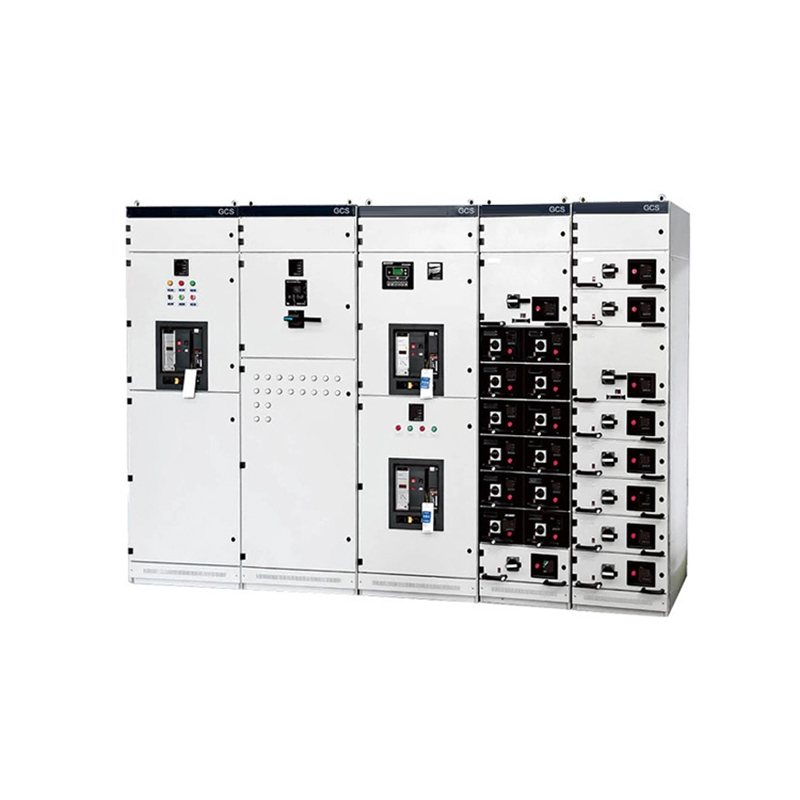1. Classification of low-voltage distribution panels
Fixed distribution panels (GGD): Suitable for power distribution needs of industrial and mining enterprises, power plants, etc.
Drawer-type distribution panels (GCK, GCS, MNS): Suitable for places with high requirements for power supply reliability.
Power distribution panel (XL-21): Widely used in construction and industrial control.
Terminal distribution panel (PZ30): Suitable for terminal power distribution, such as office buildings and shopping malls.
Intelligent distribution panel: Supports remote monitoring and data collection to improve management efficiency.

2. Technical parameters of low-voltage distribution panel
Rated voltage: 380V/220V
Rated current: determined according to load demand
Rated short-circuit breaking capacity: such as 50kA, 85kA, etc.
Protection level: IP30-IP65
Structural form: fixed, drawer type
Intelligent functions: remote monitoring, fault diagnosis, energy consumption analysis
3. Advantages and disadvantages of low-voltage distribution panel
Fixed distribution panel (GGD)
Advantages: simple structure, low cost, easy maintenance.
Disadvantages: poor scalability, maintenance requires power outage.

Drawer distribution panel (GCK, GCS, MNS)
Advantages: modular design, easy maintenance and replacement, high reliability.
Disadvantages: high price, high installation requirements.
Power distribution panel (XL-21)
Advantages: small size, suitable for small power supply systems.
Disadvantages: limited carrying capacity.
Terminal distribution panel (PZ30)
Advantages: Suitable for power supply of small terminals, easy to install.
Disadvantages: Limited scope of application.
Intelligent distribution panel
Advantages: Support remote monitoring and improve management efficiency.
Disadvantages: High cost and strong dependence on the network.
4. Key factors for purchasing low-voltage distribution panels in the venue
Environmental factors: Consider humidity, temperature, and protection level (IP level).
Load type: Determine the rated current and short-circuit breaking capacity.
Expansion requirements: Whether additional circuits need to be added in the future.
Safety: Consider short-circuit, overload, and leakage protection functions.
Maintenance convenience: Drawer type is easier to maintain but the cost is high, and the fixed type is suitable for projects with limited budgets.
Brand and quality: Choose a well-known brand that meets IEC or GB standards.
Intelligent requirements: Whether remote monitoring and data acquisition functions are required.
5. Selection Guide for Low Voltage Distribution Panels
Factories and large buildings: Drawer-type (GCK, GCS, MNS) are recommended, which are highly reliable and easy to maintain.
Small commercial or residential: Fixed (GGD) or terminal distribution panels (PZ30) are recommended, which are cost-effective.
Outdoor and harsh environments: models with high protection levels (such as IP54 or above) need to be selected.
Intelligent management requirements: Intelligent distribution panels are recommended to improve energy efficiency management.
6. Well-known low-voltage component brands
Circuit breaker brands: Schneider, ABB, Siemens, Eaton, CHINT, BEIYUAN, Shanghai Renmin, LIANXIN.
Contactors and relays: Schneider, ABB, Siemens, Omron, Weidmüller.
Power supply and voltage regulator: Mean Well, Phoenix Contact, ABB.
Cables and terminal blocks: Phoenix Contact, Weidmüller, Omron.
Intelligent monitoring and communication equipment: Siemens, Schneider, Acrel.
7. Low-voltage distribution panel manufacturer
CHNGS Gongshun Electric Co., Ltd.
8. Key points for installation and maintenance of low-voltage distribution panels
Pre-installation inspection: Ensure that the equipment is in good condition and meets the design requirements.
Wiring requirements: Wiring should be carried out in accordance with electrical specifications to ensure a firm connection.
Regular inspections: Check the tightness of the wiring and troubleshoot overheating and aging.
Intelligent system maintenance: Regularly update the remote monitoring system to ensure accurate data.
Fault handling: When an abnormality occurs, the cause should be analyzed and repaired in a timely manner.
